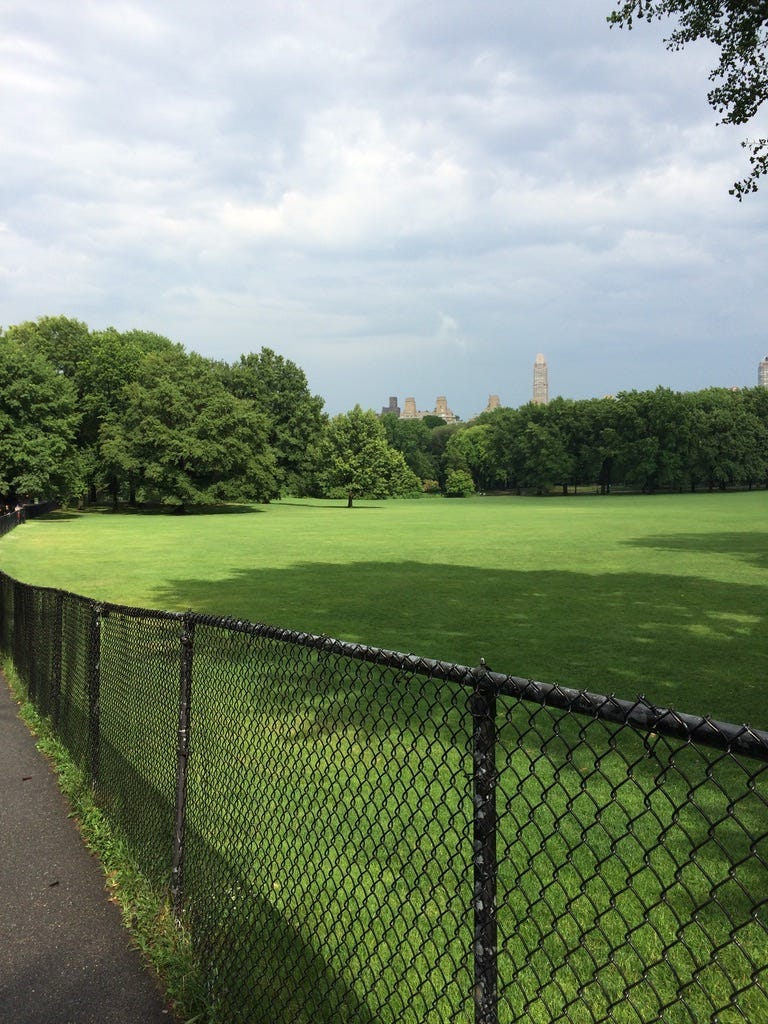Pace
This is Western Coffee—notes on building the creative body. Last time: Faster. The whole series is here. Please share this email; you can sign up free below.
Some runners hold a pace like a metronome, and every time I’m exposed to this phenomenon I wonder what that feels like. I love to run, but for me it’s often a bit of angelic wrestling, a constant conscious effort to devise more will that fades as it forms like the thunderstorms lava-lamping over a weather radar in July. This approach can tender the completion of a goal, but like the weather it tends to express in probabilities: a 90 percent chance I’ll finish the run, a 30 percent chance I’ll hit the pace I’d like to, all of this in flux.
On Thursday I ran in Central Park with a group of mostly gay men who get together for training workouts around the city. After welcomes and introductions, our horde divided into a handful of groups based on our intended speed that evening, with a volunteer pace leader for each one. I followed the eight-minute guy, who hardly glanced at his fitness watch as he loped along with tick-tock consistency, arms however darting like electrons in plasma. It was 89 degrees outside, maybe a little cooler in the park, and I wore a hydration pack acquired after my last triathlon rehearsal, when I lost the weight of a terrier.
On my own this would have been a plod, my legs weary from a heavy training week and my brain tarred by the heat. But the knowledge that we were together not only in the effort but also in its precision lightened my gait and held my eyes to the horizon, conveniently speckled with handsome athletes, and my pace leader’s pace was also mine.
Then, a few miles in, some of the runners who’d pulled ahead exited left from the park’s main loop onto a transverse path. My pace setter and the friend he’d been chatting with decided to follow. I knew if I went with them I wouldn’t hit my six-mile target—the length of the whole main loop—so without a word I broke off on my own.
Right away I could feel the resolve—or, the integration or alignment or absence of self-opposition—start to muddy, even on the downhills, and my last mile was a half-minute slower than any of the first three. This is an observational study—maybe I would have lost steam no matter what—but it seems pretty clear that having a pacer was enough not just to elicit a different effort from me but to make more feel like less. (A recent string of records set by runners using pacing lights shows this to be a common effect.)
The record producer Rick Rubin, whom I mentioned after his interview with Ezra Klein, talks about cultivating “a harmonious relationship with time.” I feel this harmony in running sometimes, but often I don’t, and that’s useful information. My own relationship to time seems not to be itself a constant, but a shifting aggregate of other relationships—to the space I’m in, to my fatigue, to the people around me, to music, to my self-perceived capacity—and I’m finding that both in writing and in sport it’s only a comprehensive attention to these relationships that makes it possible to get anything difficult done.
Kindly send me your thoughts, questions, and provocations: dmichaelowen@gmail.com. And say hi on Instagram or Threads, or let’s Peloton together: @leggy_blond.



